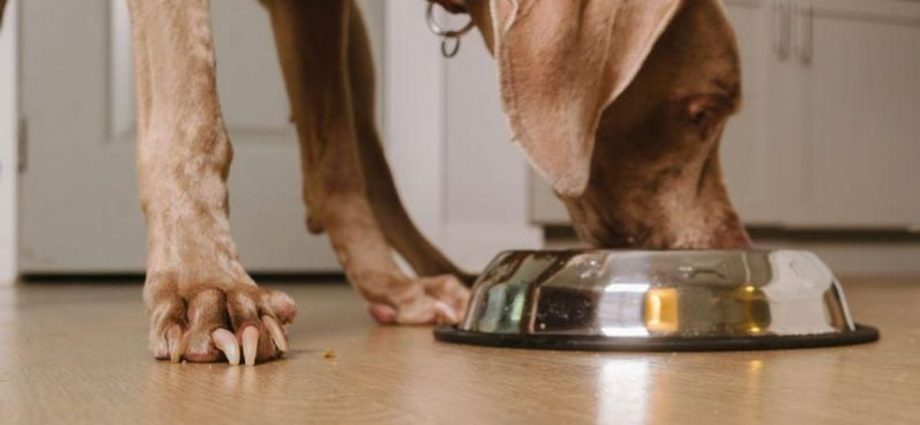WEDNESDAY, April 6, 2022 (HealthDay News) — Do you wash your dog’s food bowl every day?
Do you wash your hands before and after you fill it up?
Do you prepare Fido’s food in a different spot from where you prep your own?
If you answered no to any of these questions, you may be putting your health and your pet’s at risk, according to researchers from North Carolina State University.
For their new study, they surveyed more than 400 dog owners about their animal feeding habits and swabbed pets’ food dishes for bacteria.
To put it bluntly, as researchers wrote April 6 in PLOS ONE, the findings suggest a need to educate pet owners about pet food handling and hygiene “to minimize bacterial contamination of dishes, especially for high-risk populations.”
Fewer than 5% of dog owners surveyed were aware of U.S. Food and Drug Administration guidelines on pet and human food safety — and many weren’t following them at all.
Just one-third of pet owners said they wash their hands after feeding their dog. About 22% said they washed their pet’s dish once a week and 12% said they washed it every day. But 18% said they didn’t wash the dish more often than every three months, and some not at all.
(The FDA recommends lathering up before and after feeding your pet and washing scoops and bowls with hot water and soap after every use.)
“Just the fact that so many people didn’t even know about it is unfortunate,” said study co-author Dr. Korinn Saker, a professor of clinical nutrition in the College of Veterinary Medicine at NC State, who said pet food containers should carry safe-feeding information to raise awareness.
“I feel like the pet companies should step up,” she said. “They have so much information on their label.”
Pets and pet food can carry pathogens, including E. coli and Salmonella, Saker said, potentially causing serious illness in an immunocompromised person and a bad case of diarrhea in a pet.
For the study, the researchers also swabbed 68 dog dishes belonging to 50 pet owners to check for bacteria. They did not isolate and identify specific bacteria, just noted their presence, Saker said.
Owners were divided into three groups. Group A was asked to follow the FDA’s pet food handling guidelines. Group B followed FDA guidelines for both pets and people. Group C followed no guidelines.
The team then tested the dogs’ dishes a week later. Compared to Group C bowls, bacteria levels decreased significantly in the bowls of groups A and B. Washing bowls with hot water proved more effective than using cold or lukewarm water.
Dr. Aaron Glatt, chief of infectious diseases at Mount Sinai South Nassau in Oceanside, N.Y., said the key to avoiding any problems for the people in your pet’s life is the same advice your mother gave you: Wash your hands after handling pets, their food and their dishes.
Most healthy people won’t experience issues even if they come into contact with these bacteria, said Glatt, who wasn’t involved with the study. But those who are immunocompromised should be more cautious.
“Anytime an immunocompromised person is around bacteria and isn’t careful with hygiene, you’re going to run into problems,” he said. “You could substitute in this the pet bowls, toilet bowls, sinks, bathroom, touching subway rails, doorknobs.”
The best way to clean hands is to use soap and water and clean vigorously for about 20 to 30 seconds, advice many Americans have heard since the COVID-19 pandemic began. Clean under nails, especially if yours are longer.
“I think it’s important to do studies like this, but I don’t think it takes a rocket scientist to realize that if you’re coming into contact with potentially contaminated things — and who would not have thought that a dog bowl is a potentially contaminated item? — then you wash your hands and don’t keep it near food. You wouldn’t cook next to your bathroom,” Glatt said.
Health experts have long known that people live in a very germy world, said Dr. William Schaffner, a professor of preventive medicine at Vanderbilt University Medical Center in Nashville, Tenn.
Wherever there is an element of moisture, protein or vegetable matter, there is a microbial population, and, he said, that includes in the mouths of all mammals from humans to dogs to penguins.
“If you then subsequently go around and culture the dog bowls, we shouldn’t be shocked or very surprised that we’ll find bacteria,” said Schaffner, who was not part of the study.
Still, he cautioned against being overly concerned about contracting diseases in this way.
Like Glatt, he reiterated the importance of good hand hygiene, whether you are handling a dog bowl or preparing your own dinner.
While the A and B study groups all learned the guidelines for safe feeding of pets, only 8% said they were likely to adhere to the cleaning protocols long-term.
“I thought that that was unfortunate to get that kind of response,” researcher Saker said.
“It may take us doing a follow-up study that actually identifies the pathogenic bacteria concentration in these bowls based on how they are or aren’t washed and cleaned to get people to change their minds,” she noted. “But people are people, I guess. If it didn’t affect them, it’s not something that’s going to change their behavior.”
More information
The U.S. Food and Drug Administration has more on safe handling of pet food.
SOURCES: Korinn Saker, DVM, PhD, professor, clinical nutrition, College of Veterinary Medicine, North Carolina State University, Raleigh; Aaron Glatt, MD, chair, medicine, and chief, infectious diseases, Mount Sinai South Nassau, Oceanside, N.Y.; William Schaffner, MD, professor, preventive medicine, Department of Health Policy, and professor of medicine, Division of Infectious Diseases, Vanderbilt University Medical Center, Nashville, Tenn.; PLOS ONE, April 6, 2022
Copyright © 2025 HealthDay. All rights reserved.

